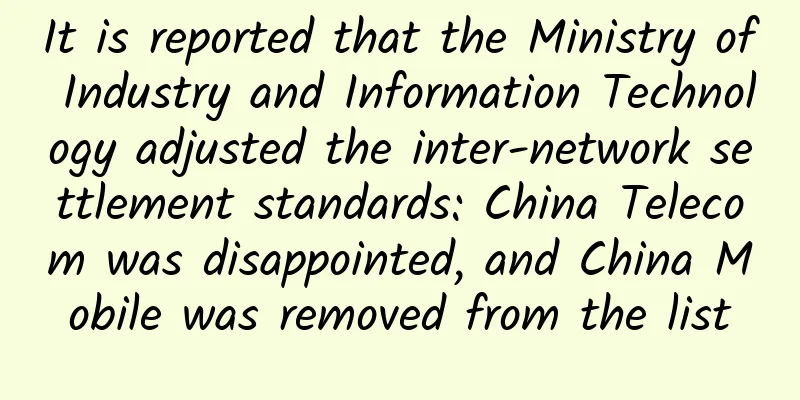Network charges are more affordable and 5G demand is gradually released

|
Data released recently on the official website of the Ministry of Industry and Information Technology shows that from January to August this year, the cumulative mobile Internet traffic reached 103.9 billion GB, a year-on-year increase of 33.7%. Among them, the traffic through mobile Internet access reached 100.3 billion GB, accounting for 96.5% of the total mobile Internet traffic. In August, the average mobile Internet access traffic per household reached 11.25 GB, a year-on-year increase of 30.3%. Mobile Internet traffic continues to maintain rapid growth.
However, in sharp contrast, from January to August this year, the three basic telecommunications companies achieved mobile communications business revenue of 604.5 billion yuan, a year-on-year decrease of 0.8%, accounting for 66% of telecommunications business revenue. "From the overall data, the number of 4G mobile users continued to increase from January to August, and mobile Internet traffic also increased by 33.7%, but the revenue from mobile communications business is still on a downward trend. This is related to my country's continuous deepening of the policy of speeding up and reducing fees. The speed increase and fee reduction have made 4G network charges more affordable and accelerated the popularization of 4G networks across the country." said Li Zhen, an industry research analyst at the Innovation Research Institute of Peking University Science Park. Data shows that from January to August this year, my country's telecommunications business revenue totaled 915.3 billion yuan, a year-on-year increase of 3.1%. The total volume of telecommunications business calculated at the same price as last year was 973.3 billion yuan, a year-on-year increase of 19.3%. Among them, fixed value-added and other income continued to grow rapidly, which effectively promoted the growth of telecommunications business income. The three basic telecommunications companies actively developed emerging businesses such as IPTV (Internet TV), Internet data centers, big data, cloud computing, and artificial intelligence. From January to August, they completed a total of 116.7 billion yuan in fixed value-added business income, a year-on-year increase of 23.1%, accounting for 12.7% of telecommunications business income, driving the growth of telecommunications business income by 2.5 percentage points. "In terms of emerging businesses such as IPTV and Internet data centers, the business revenue of the three mobile operators has increased significantly, driving their business revenue to continue to grow, indicating that my country's information infrastructure construction is constantly improving," said Li Zhen. It is worth noting that IPTV users grew rapidly in the first eight months, and the penetration rate of mobile Internet users to mobile phone users has steadily increased. As of the end of August, the three basic telecommunications companies had developed 1.33 billion mobile Internet users, with a penetration rate of 83.2% for mobile phone users, an increase of 1.1 percentage points from the end of last year. There were 1.059 billion cellular Internet of Things terminal users, a year-on-year increase of 18.6%, a net increase of 31.55 million from the end of last year, of which terminal users used in smart manufacturing, smart transportation, and smart public utilities accounted for 20.3%, 18.8%, and 22.5%, respectively. The total number of IPTV users reached 307 million, a year-on-year increase of 6.7%. In this regard, Li Zhen believes that with the continuous popularization of 5G networks, the demand of B-end will gradually be released. "In the future, in the short period when 5G networks have not yet been fully popularized to C-end civilian use, B-end scenarios will have great potential. Typical scenarios such as autonomous driving, smart cities, industrial Internet, and telemedicine will continue to generate more 5G mobile network demand. During this period, the number of 4G mobile networks of C-end users will show a relatively stable growth. With the continuous improvement of network construction, the emergence of killer C-end applications, and the gradual acceptance of 5G tariffs by the public, in the long run, 5G will be popularized in about 5 years." Li Zhen said. |
<<: Http protocol: Under what circumstances does an options request occur?
>>: Huawei launches Intelligent Body and works with partners to build full-scenario intelligence
Recommend
Revealed: What secrets does the extra 1G of 5G contain compared to 4G?
With the continuous development of communication ...
What stage has IPv6 reached now? How to upgrade to IPv6?
Since Jon Postel defined IPv4 in RFC791 in 1981, ...
Blockchain 3.0 era: All your current cognition will be overturned
From the time the value of blockchain was discove...
China Mobile announces it has built more than 500,000 5G base stations
On the afternoon of August 31, the 2021 World 5G ...
What else will we look forward to in the communications industry in 2023?
Hello everyone, I am Xiaozaojun. The joyful and ...
Developers meet in Guangzhou to check in at Kunpeng Salon and see how new computing can enable smart government office!
[51CTO.com original article] At 2:00 pm this Frid...
What is the principle of communication? It turns out to be so simple
What is Communication? Simply put, communication ...
Five steps organizations can take to maximize data center performance
When many organizations list the trends and issue...
To cancel the caller ID fee, operators may wish to take the initiative
Is there a charge for caller ID? This charging it...
The most anticipated technology trends in 2023
In 2023, technology will further develop, and new...
A must-have for interviews! 15 classic questions about TCP protocol!
[[410649]] Preface TCP protocol is a must-know kn...
MiWi protocol, a network protocol suitable for small IoT
There are many ways to achieve short-distance com...
The sooner you know, the sooner you will benefit. What exactly is NaaS, which is about to become a trend?
X-as-a-Service offerings have been around for mor...
What is the difference between enterprise Wi-Fi and home Wi-Fi? | These 5 points will help you understand
With the popularity of smart terminals, people ha...
To ensure the healthy development of 5G, we must start with the standardization of business data release
On the eve of the Spring Festival, the Ministry o...








![[Black Friday] TMThosting: VPS monthly payment up to 55% off, dedicated server 10% off, Seattle data center, Alipay support](/upload/images/67cac229924c0.webp)
